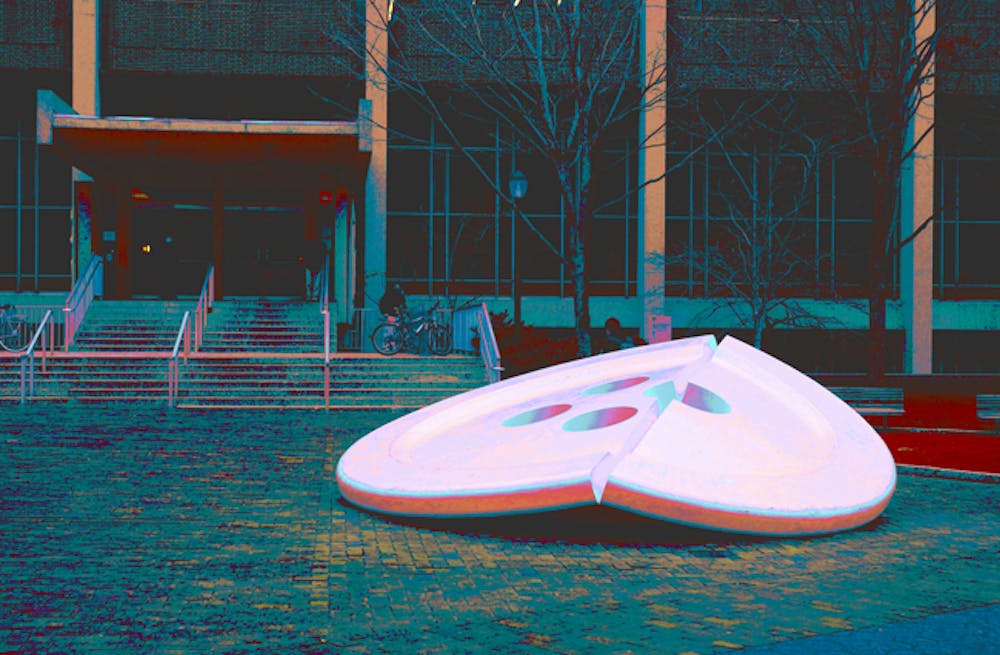Art and sex. Sex and art. One of those dynamic duos, they go together like X and Y (or XX and XY, even). Art has been a functioning sex addict since Botticelli’s babes flashed the Italian Renaissance; it pulled a Russell Brand when Egon Schiele drew porn–before–porn in 1920s Vienna.
So it’s fitting that Penn’s sexual “Mission: Impossible” is in a work of art. What is somewhat remiss is that said artwork is tragically unsexy—Claes Oldenburg's iconic 1980s installation, “The Button." Perhaps five meters in diameter of whitewashed aluminium, the Locust icon is a clumsy, pallid structure. The only refuge from the pointless symmetry of this conventional structure is an offset split that divides the button into one and two thirds of itself. The seam of this division is raised from the ground on which the sculpture rests, creating an idyllic sex nook for those of us who dream of hitting it under a large shelf. So prevalent is this urban legend that there is CCTV rolling under the sculpture and it’s not there filming a documentary on Penn’s squirrel population.
But despite evident aesthetic flaws, “The Button” stands up where other works of art take a seat. Yes, Michelangelo’s David looks like a hot Italian Jesus—but, for God’s sake, you’re at the Accademia di Belle Arti! This is not the time or place to get sexy, you pervs. Set apart by plinth or museum rope, many artworks suggest shenanigans; “The Button” facilitates them.
Considering this work of art in relation to its surroundings poses the question: What’s the point of a public sculpture anyway? Were it merely cosmetic, “The Button” would be a conclusive failure. But there’s something more: really great art is an experience that is novel and specific to itself—and “The Button” pretty thoroughly checks this box. How else could you have Penn students making sex tapes on the pavement in front of Van Pelt? Beauty is more than skin deep: “The Button” is balls ugly, but it gets action.

